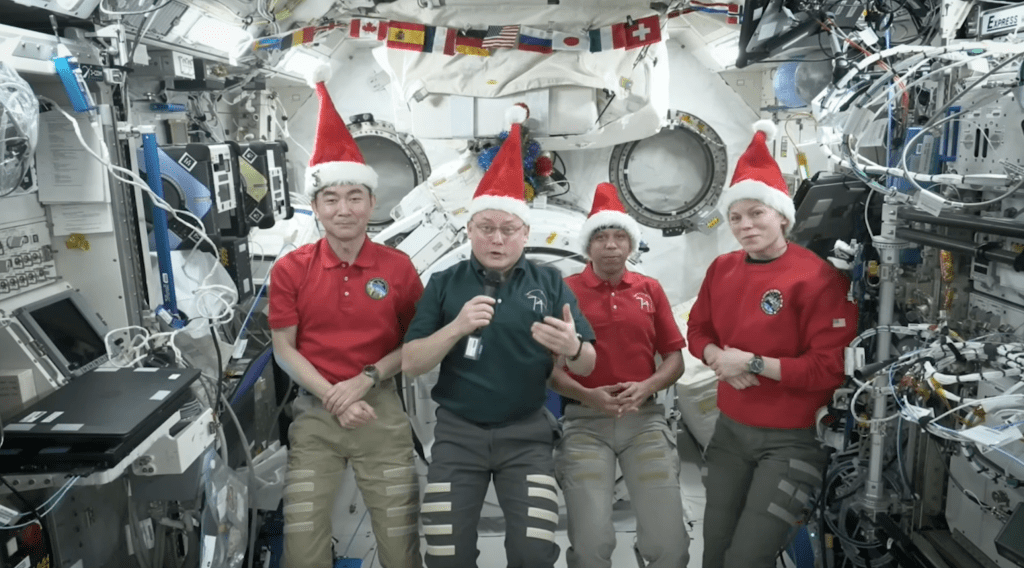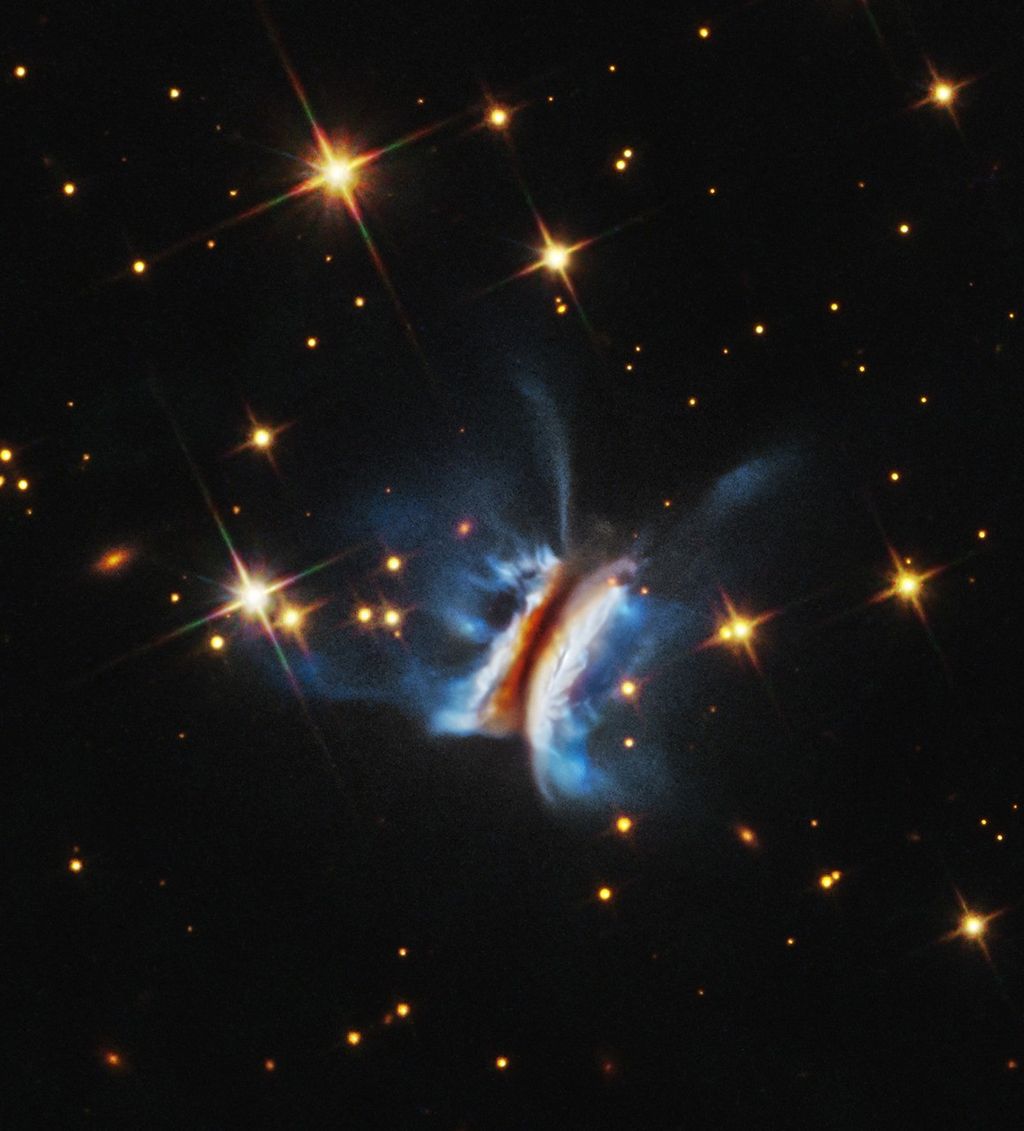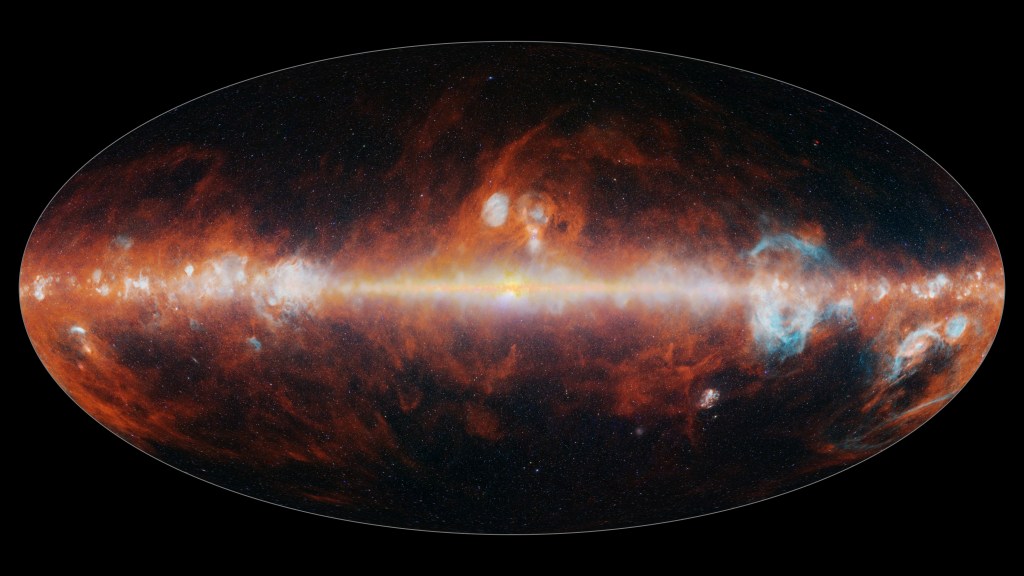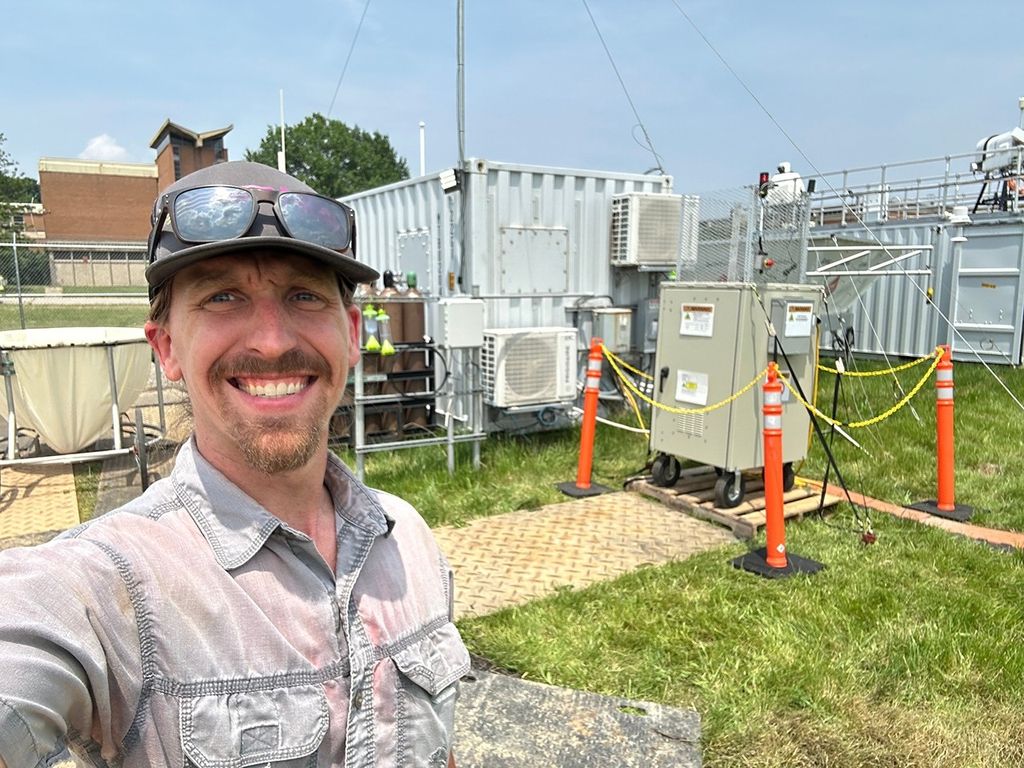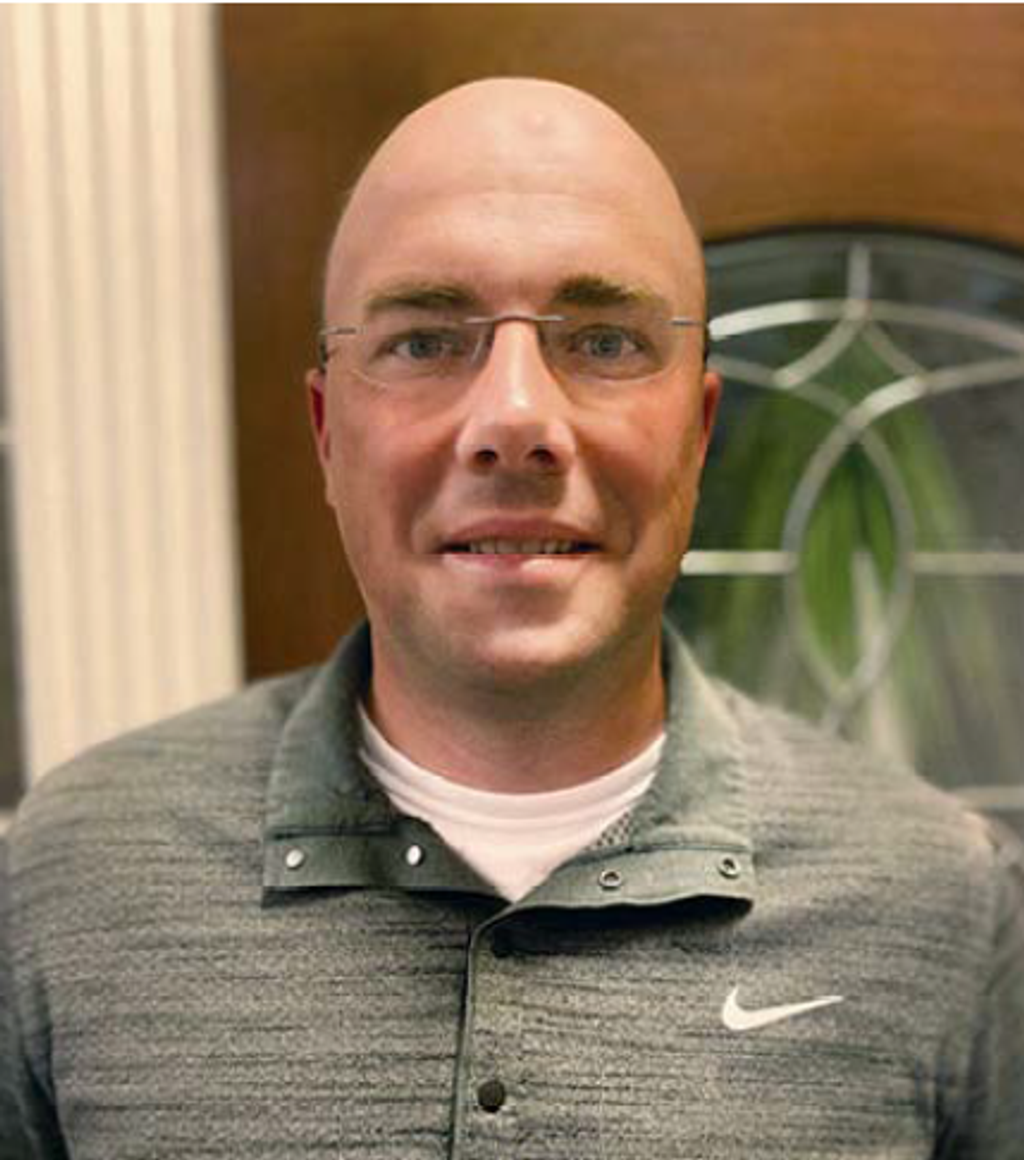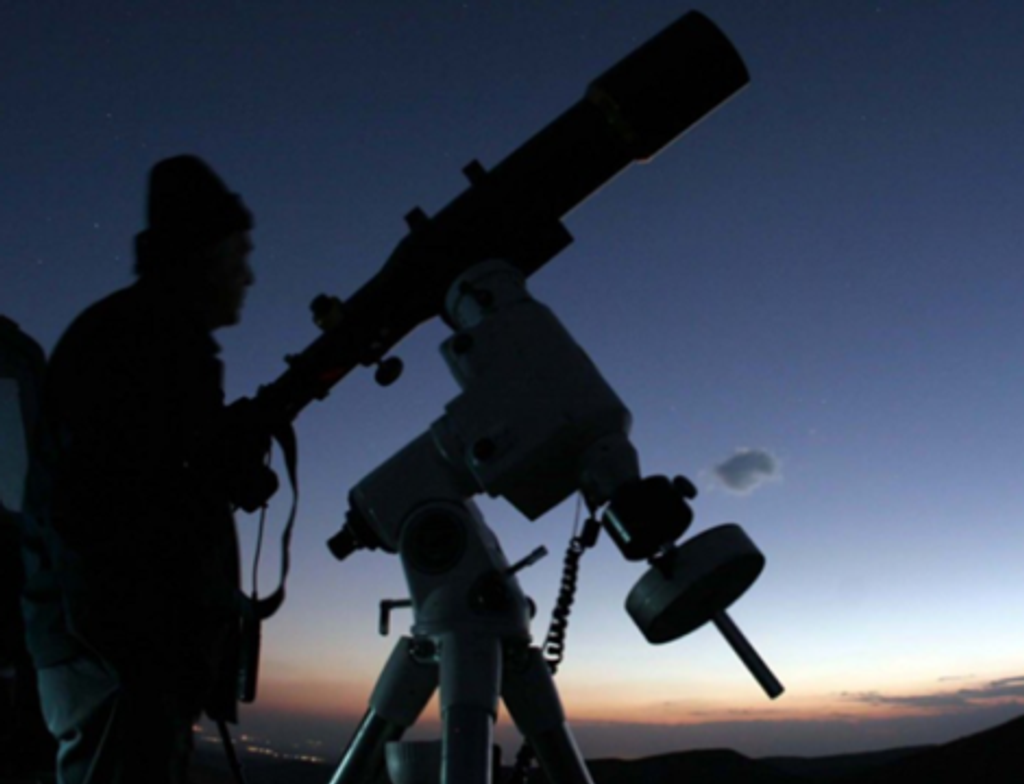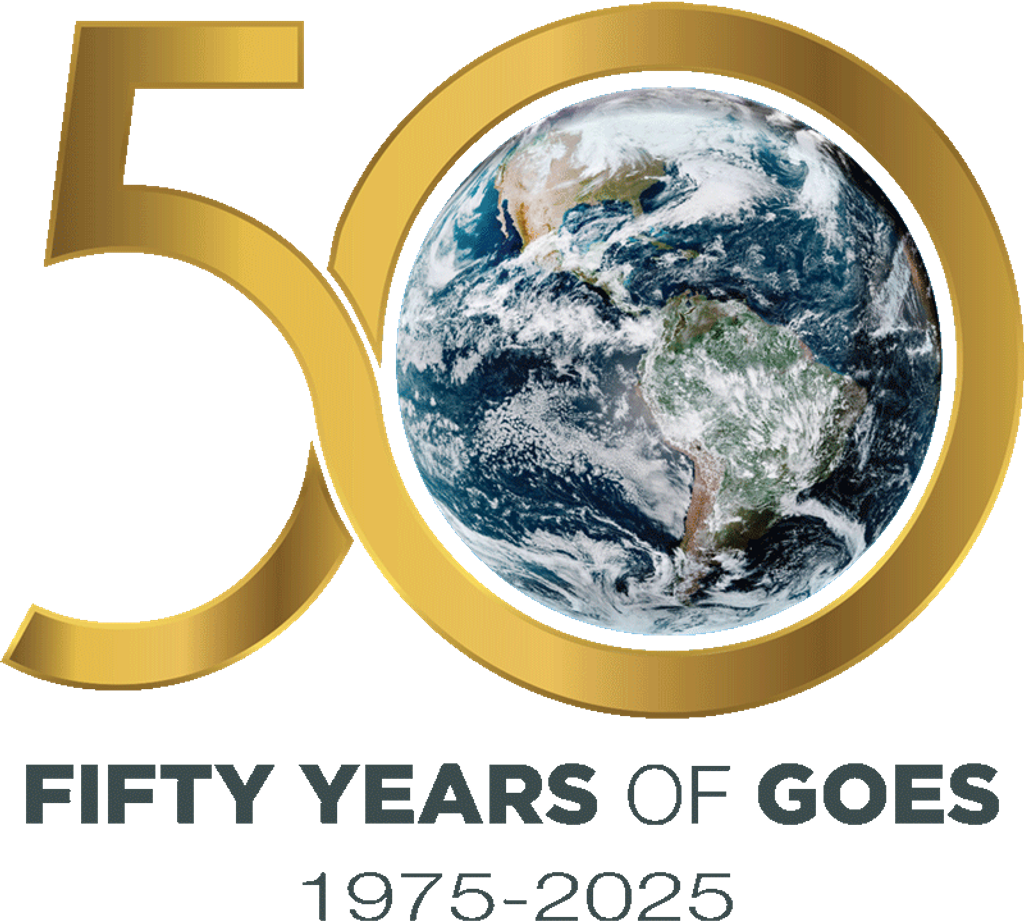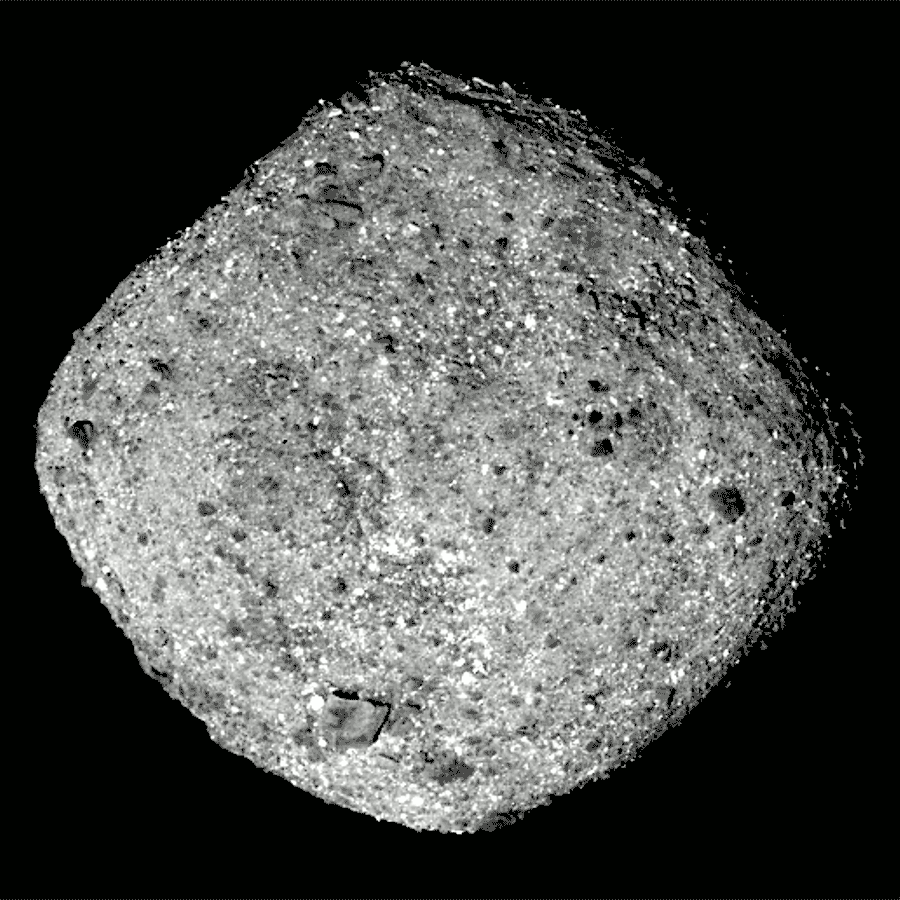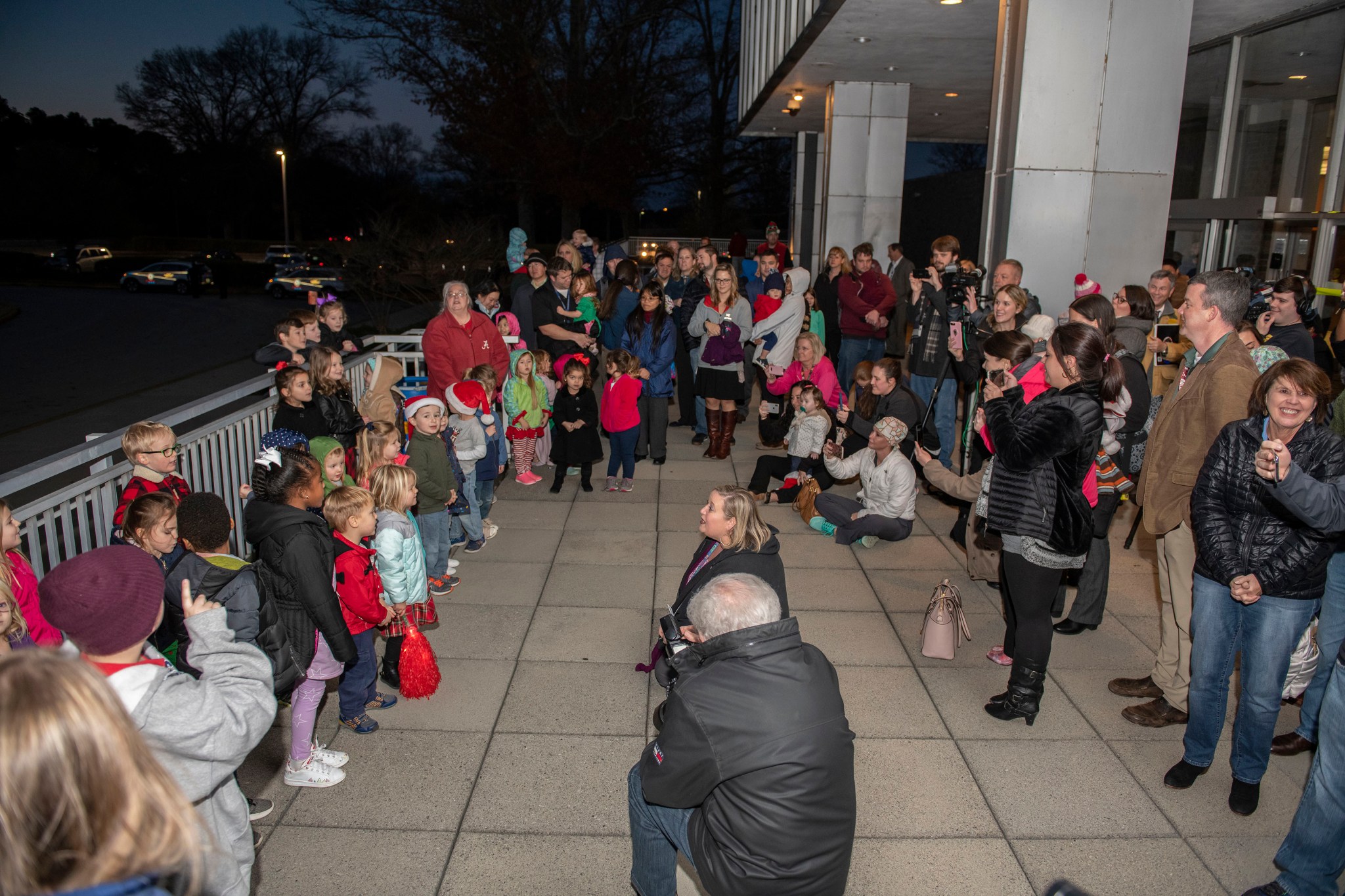In This Week’s Star
- Marshall Director Jody Singer Highlights Center’s Accomplishments at Dec. 3 All-Hands
- OSIRIS-REx Arrives at Bennu
- NASA Announces New Partnerships for Commercial Lunar Payload Delivery Services
- NASA, Partners Send New Crew and Cargo to International Space Station
- Marshall Tree-lighting Festivities Kick Off 2018 Holiday Season
- This Week in NASA History: Mating of Unity and Zarya – Dec. 6, 1998
- Obituaries
Marshall Director Jody Singer Highlights Center’s Accomplishments at Dec. 3 All-Hands
By Amanda Adams
NASA’s Marshall Space Flight Center Director Jody Singer celebrated the successful landing of the agency’s InSight rover on Mars and the successful crew launch to the International Space Station during her All-Hands meeting with the Marshall workforce Dec. 3.
“It makes you proud to be an American and proud to work for NASA,” said Singer.
She announced the center would observe a national day of mourning, honoring former President George H.W. Bush, Dec. 5; provided updates on Congress’ work to pass a continuing resolution to avoid a government shutdown; and discussed results from Marshall’s employee viewpoint survey.
Additionally, Singer outlined how Marshall senior leadership will address mission, people and partnership goals in 2019.
Singer also highlighted the center’s major accomplishments in 2018, including the launch of the Refabricator and the Life Sciences Glovebox to the International Space Station and progress testing and building NASA’s Space Launch System rocket.
“I applaud each and every one of you who have been involved in these activities because you do make a difference,” said Singer. “Flying the biggest rocket ever built and putting it together like it’s never been built before is a hard mission.”
Adams, an ASRC Federal/Analytical Services employee, supports the Office of Strategic Analysis & Communications.
OSIRIS-REx Arrives at Bennu
After traveling through space for more than two years and over 2 billion kilometers, NASA’s Origins, Spectral Interpretation, Resource Identification, Security-Regolith Explorer (OSIRIS-REx) spacecraft arrived at asteroid Bennu Dec. 3. The spacecraft will spend almost a year surveying the asteroid with five scientific instruments with the goal of selecting a location that is safe and scientifically interesting to collect a sample. OSIRIS-REx will return the sample to Earth in September 2023. OSIRIS-REx is the third mission in NASA’s New Frontiers Program. NASA Marshall Space Flight Center manages New Frontiers for the agency’s Science Mission Directorate.
NASA Announces New Partnerships for Commercial Lunar Payload Delivery Services
Nine U.S. companies now are eligible to bid on NASA delivery services to the lunar surface through Commercial Lunar Payload Services contracts, as one of the first steps toward long-term scientific study and human exploration of the Moon and eventually Mars.
These companies will be able to bid on delivering science and technology payloads for NASA, including payload integration and operations, launching from Earth and landing on the surface of the Moon. NASA expects to be one of many customers that will use these commercial landing services.
“Today’s announcement marks tangible progress in America’s return to the Moon’s surface to stay,” said NASA Administrator Jim Bridenstine. “The innovation of America’s aerospace companies, wedded with our big goals in science and human exploration, are going to help us achieve amazing things on the Moon and feed forward to Mars.”
The selected companies are:
Astrobotic Technology, Inc.: Pittsburgh
Deep Space Systems: Littleton, Colorado
Draper: Cambridge, Massachusetts
Firefly Aerospace, Inc.: Cedar Park, Texas
Intuitive Machines, LLC: Houston
Lockheed Martin Space: Littleton, Colorado
Masten Space Systems, Inc.: Mojave, California
Moon Express: Cape Canaveral, Florida
Orbit Beyond: Edison, New Jersey
NASA’s Science Mission Directorate initiated the request for proposals leading to these selections as the first step in achieving a variety of science and technology objectives that could be addressed by regularly sending instruments, experiments and other small payloads to the Moon. The Science Mission Directorate serves as the NASA interface between the agency’s mission directorates, the scientific community, and other external stakeholders in developing a strategy to enable an integrated approach for robotic and human exploration within NASA’s Moon to Mars Exploration Campaign.
The Commercial Lunar Payload Services contracts are indefinite delivery, indefinite quantity contracts with a combined maximum contract value of $2.6 billion during the next 10 years. The agency will look at a number of factors when comparing the bids, such as technical feasibility, price and schedule.
Lunar payloads could fly on these contracted missions as early as 2019. In October, NASA issued a call for potential lunar instruments and technologies to study the Moon, with proposals due in January. These early missions will enable important technology demonstrations that will inform the development of future landers and other exploration systems needed for humans to return to the lunar surface, and help prepare the agency to send astronauts to explore Mars.
NASA will re-examine the private market periodically for new and emerging lunar delivery capabilities, and may offer additional companies an opportunity to join Commercial Lunar Payload Services through a contract process called on-ramping.
NASA, Partners Send New Crew and Cargo to International Space Station
On Dec. 3, a Soyuz rocket delivered NASA astronaut Anne McClain, David Saint-Jacques of the Canadian Space Agency and Oleg Konenenko of the Russian space agency Roscosmos to the International Space Station. Two days later, a SpaceX cargo resupply mission followed, carrying a holiday-season load of supplies, equipment and experiments to the space station.
The Soyuz MS-11 launched from the Baikonur Cosmodrome in Kazakhstan at 5:31 a.m. CST Dec. 3. Upon docking, the incoming station crew were greeted by Expedition 57 Commander Alexander Gerst of the European Space Agency, Serena Auñón-Chancellor of NASA and Sergey Prokopyev of Roscosmos.
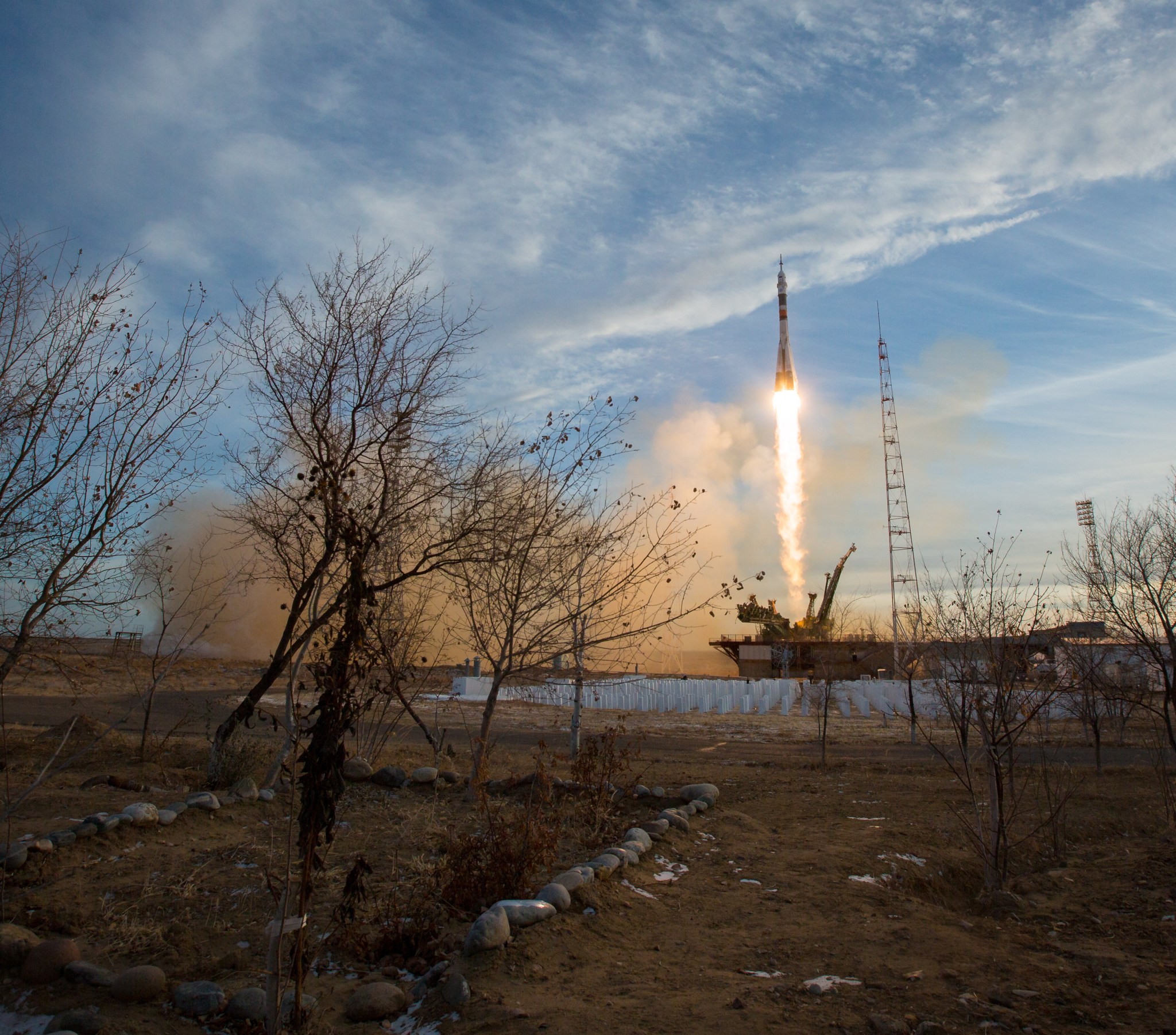
Their arrival restores the station’s crew complement to six until Auñón-Chancellor, Gerst and Prokopyev return to Earth Dec. 20. Expedition 58 officially will begin once the departing spacefarers undock from the station.
The new crew will support initial test flights of NASA’s Commercial Crew Program, set to return human spaceflight launches to American soil. They’ll also spend more than six months conducting a variety of experiments in biology, Earth science, automated and remote technology deployment and human physiology that will enhance new crewed missions to the Moon and Mars. Highlights of upcoming investigations include experiments in forest observation, robotic refueling and satellite deployment.
The 16th SpaceX Dragon cargo resupply flight lifted off Dec. 5 at 12:16 p.m. CST from Cape Canaveral Air Force Station in Florida, delivering more than 5,800 pounds of critical research and supplies to the space station. It is scheduled to arrive at the space station Dec. 8 to deliver more than 5,800 pounds of critical research and supplies to the space station.
Visit NASA’s space station blog for further mission coverage, and follow the latest station news on Facebook and Twitter.
Marshall Tree-lighting Festivities Kick Off 2018 Holiday Season
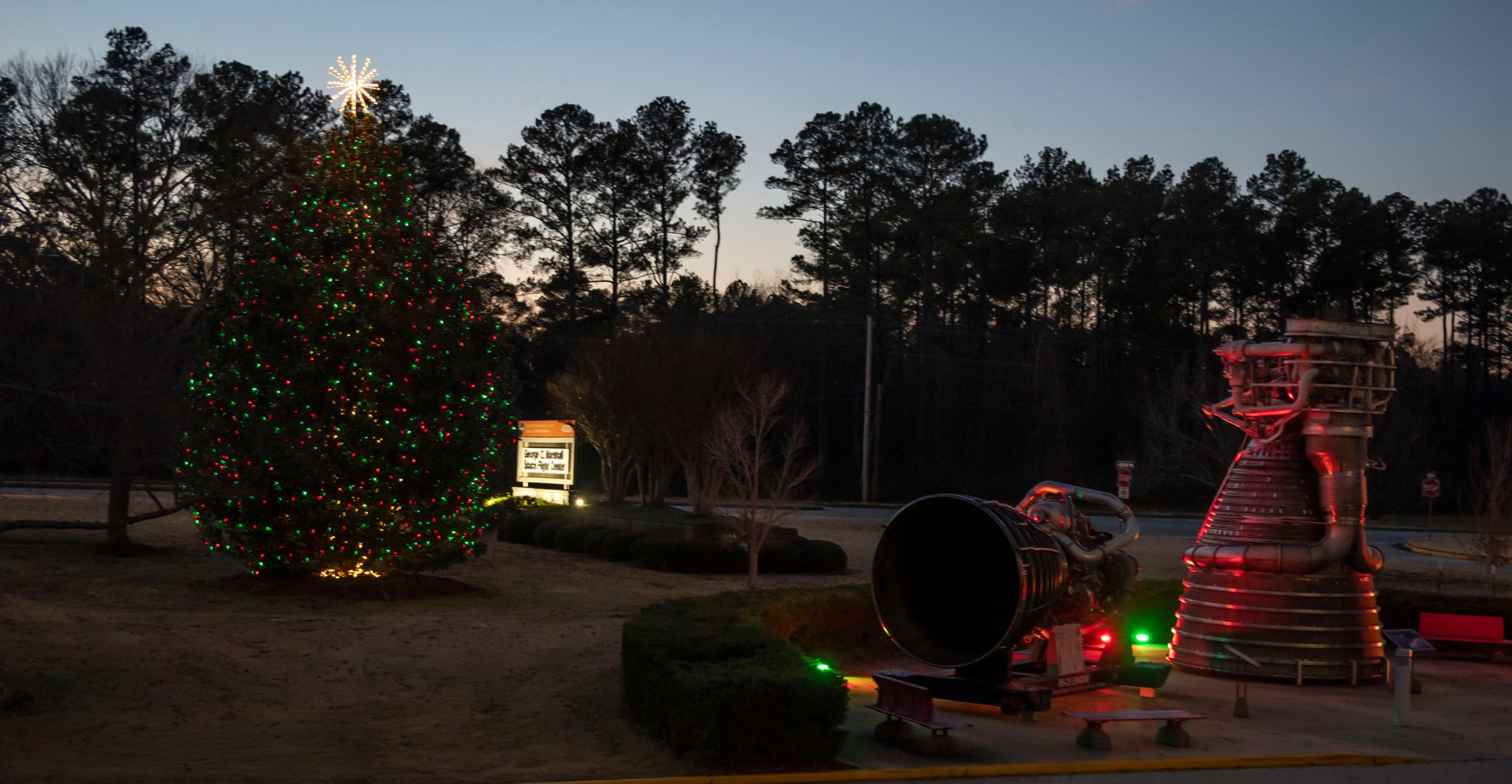
NASA Marshall Space Flight Center’s holiday tree was officially lit Dec. 3 during an event that featured opening remarks from Marshall Associate Director Steve Miley, holiday songs from children from the Marshall Child Development Center and a visit from Santa Claus. Marshall’s newly lit holiday tree stands just behind the iconic NASA rocket engines outside Building 4200. (NASA/MSFC/Fred Deaton)
Marshall team members gather to hear songs from members of the Marshall Child Development Center at the annual Marshall tree-lighting celebration Dec. 3 outside of Building 4200. (NASA/MSFC/Fred Deaton)
This Week in NASA History: Mating of Unity and Zarya – Dec. 6, 1998
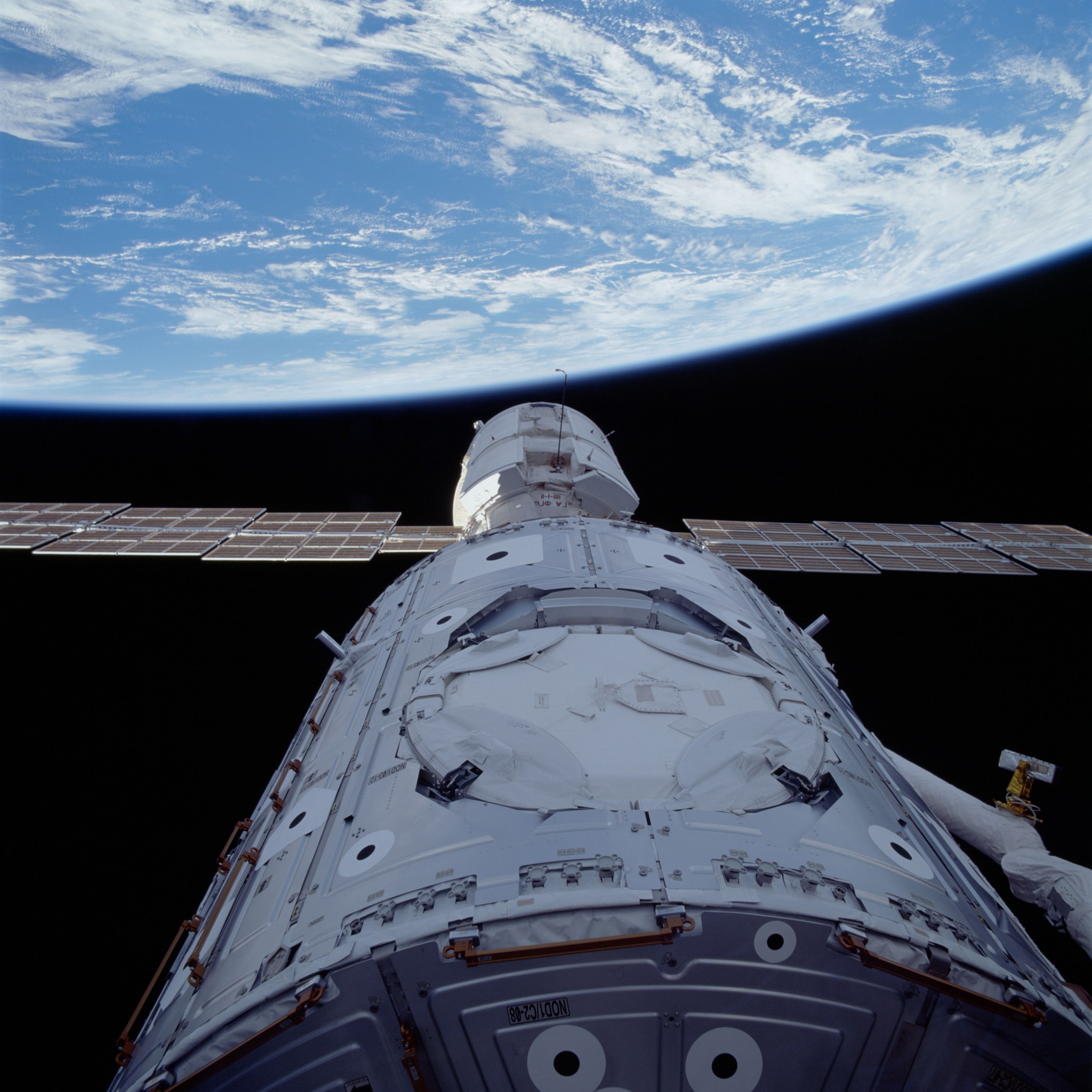
This week in 1998, the space shuttle Endeavour, mission STS-88, launched Dec. 6, 1998, from NASA’s Kennedy Space Center carrying the U.S.-built Unity connecting module and two pressurized mating adapters. Unity was the first piece of the International Space Station provided by the United States. On Dec. 6, the STS-88 crew captured the Russian Zarya module, launched Nov. 20, and mated it with the Unity node. Engineers and scientists at NASA’s Marshall Space Flight Center led the development of four key systems supporting science operations and investigations on board the space station including the EXPRESS Racks, the Microgravity Science Glovebox facility, the Materials Science Research Rack, and the Windows Observational Research Facility. Marshall teams also developed the Oxygen Generation System and Water Recovery System technologies as part of the station’s Environmental Control and Life Support Systems, which provides a safe and comfortable environment for the crew and ensures a pure supply of water and air. Today, the Payload Operations Integration Center at Marshall serves as “science central” for the space station, working 24/7, 365 days a year in support of the orbiting laboratory’s science experiments. The NASA History Program is responsible for generating, disseminating, and preserving NASA’s remarkable history and providing a comprehensive understanding of the institutional, cultural, social, political, economic, technological and scientific aspects of NASA’s activities in aeronautics and space. For more pictures like this one and to connect to NASA’s history, visit the Marshall History Program’s webpage. (NASA)
Obituaries
Howell G. Vick, 84, of Harvest, Alabama, died Nov. 25. He retired from the Marshall Center in 1997 as data systems engineer.

